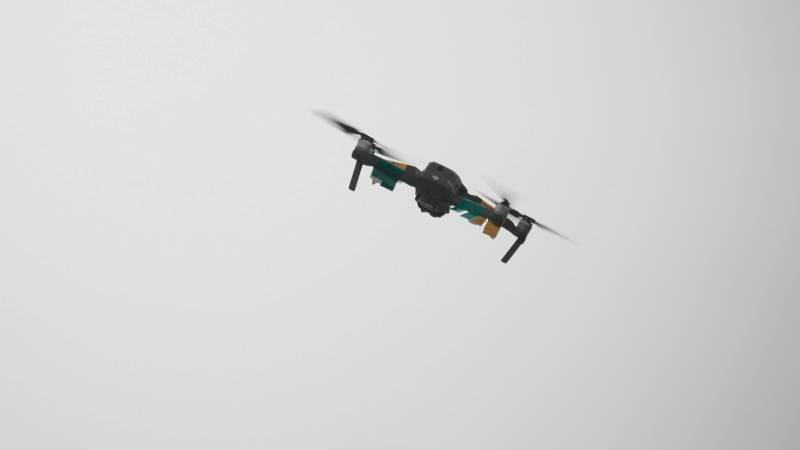Lithuania has taken an important and urgent step by announcing a Lithuania airspace closure along parts of its border with Belarus. This decision, declared on August 21, comes as a direct response to rising drone threats that have raised security concerns in the region. The Ministry of Defense confirmed that temporary no-fly zones have been established to keep the skies safe.
Emergency Lithuania Airspace Closure to Counter Drone Risks
The primary aim of this Lithuania airspace closure is to protect civilians and ensure the security of national airspace. Authorities will keep the rules in force until October 1 and may extend the restrictions further if the risks continue. This action demonstrates how seriously Lithuania is addressing the problem of drone intrusions near its borders.
In recent years, drones have increasingly conducted surveillance and gathered intelligence. They can fly unnoticed at low altitudes, which makes them difficult to detect. In some cases, operators have used drones to carry explosives or other dangerous payloads, increasing the risks they pose. For Lithuania, drones entering from neighboring regions create not only a security concern but also a direct threat to the safety of its citizens.
📡 Mystery drone from Belarus sparks panic in Lithuania — “Shahed lookalike” suspected
Lithuania considers the airspace closure one of the most effective short-term solutions. By implementing no-fly zones, authorities keep civilian aircraft away from high-risk areas and focus on monitoring unusual activity. Through these measures, Lithuania aims to reduce drone intrusions and safeguard sensitive locations near its border with Belarus.
Border Security Measures and Lithuania Airspace Closure Amid Military Exercises
The Lithuania airspace closure comes at a time when the country is already reinforcing its border security. Reports earlier confirmed that the border guard service is preparing additional measures to increase protection. These steps directly support the upcoming joint Russian-Belarusian military exercises known as “Zapad-2025,” which are expected to involve large-scale troop movements and equipment deployments.
Authorities have emphasized that they will keep the details of these security measures confidential, as revealing them could weaken their effectiveness. They also assured that all plans involve full coordination among national security services and other government agencies. The goal is to ensure that no risks escalate during this period of military activity near Lithuania’s borders.
EU Sanctions Undone by a Loophole—Lithuania Warns of ‘Keyhole’ in Trade Rules
The Zapad exercises are well-known for their size and intensity. They take place every few years and typically include thousands of troops, armored vehicles, aircraft, and naval assets. Because of their proximity to NATO member states, these drills always draw international attention. For Lithuania, which shares a long and sensitive border with Belarus, the exercises increase concerns about surveillance, drone flights, and other cross-border risks.
By combining stricter border protection with the Lithuania airspace closure, the government has put in place multiple layers of defense. This reflects the seriousness of the current situation and highlights the efforts being made to prevent any incidents that could affect the safety of people living near the border.
NATO Coordination and Air Defense Concerns
In addition to national measures, Lithuania has also turned to NATO for support. Officials have urged the alliance to act quickly to strengthen air defense systems in the country. This request came after multiple Russian drones were reported to have entered Lithuanian airspace in recent weeks, raising concerns about the ability to defend against such intrusions.
NATO already plays a significant role in protecting the Baltic region’s skies. Fighter jets from the alliance regularly patrol the airspace as part of air policing missions. However, the issue of drones is different and more complex. Unlike large aircraft or missiles, drones are small, often silent, and difficult to detect with traditional radar systems. This makes them harder to intercept and increases the challenge for defense forces.
Finland and Lithuania to Produce Anti-Personnel Mines—Here’s Why It Matters
Lithuania’s call for NATO’s involvement underlines the urgency of the situation. The concern is not only about drones carrying weapons but also about their use for surveillance and intelligence purposes. Even unarmed drones can collect valuable data or test how quickly air defenses respond, which adds to the security risk.
By enforcing the Lithuania airspace closure and working closely with NATO, Lithuania has made clear its commitment to addressing the problem. The restrictions are set to remain in place until October 1 and are aimed at reducing drone activity in the restricted areas. These steps are also intended to provide reassurance to civilians living close to the Belarusian border, who are most exposed to any potential incidents.

